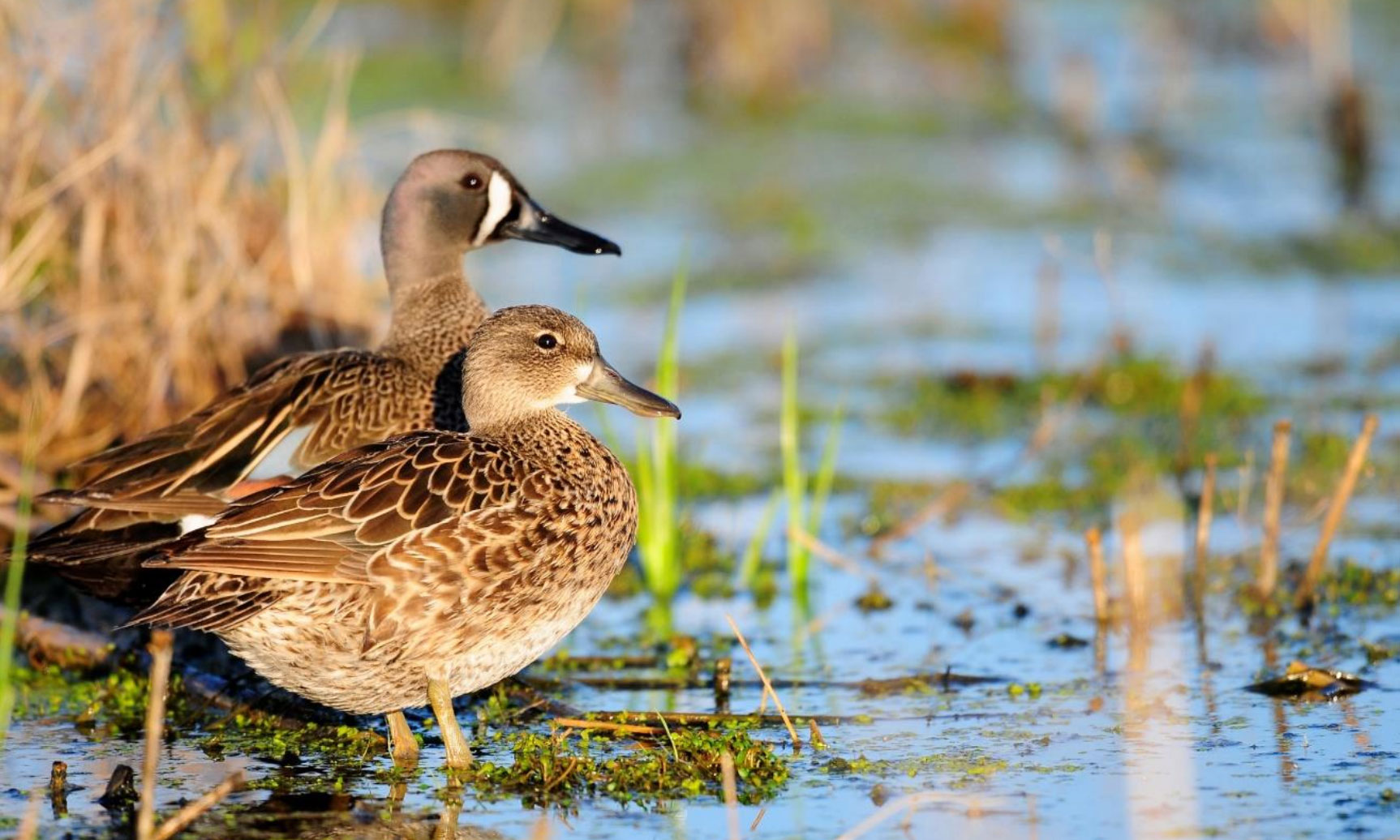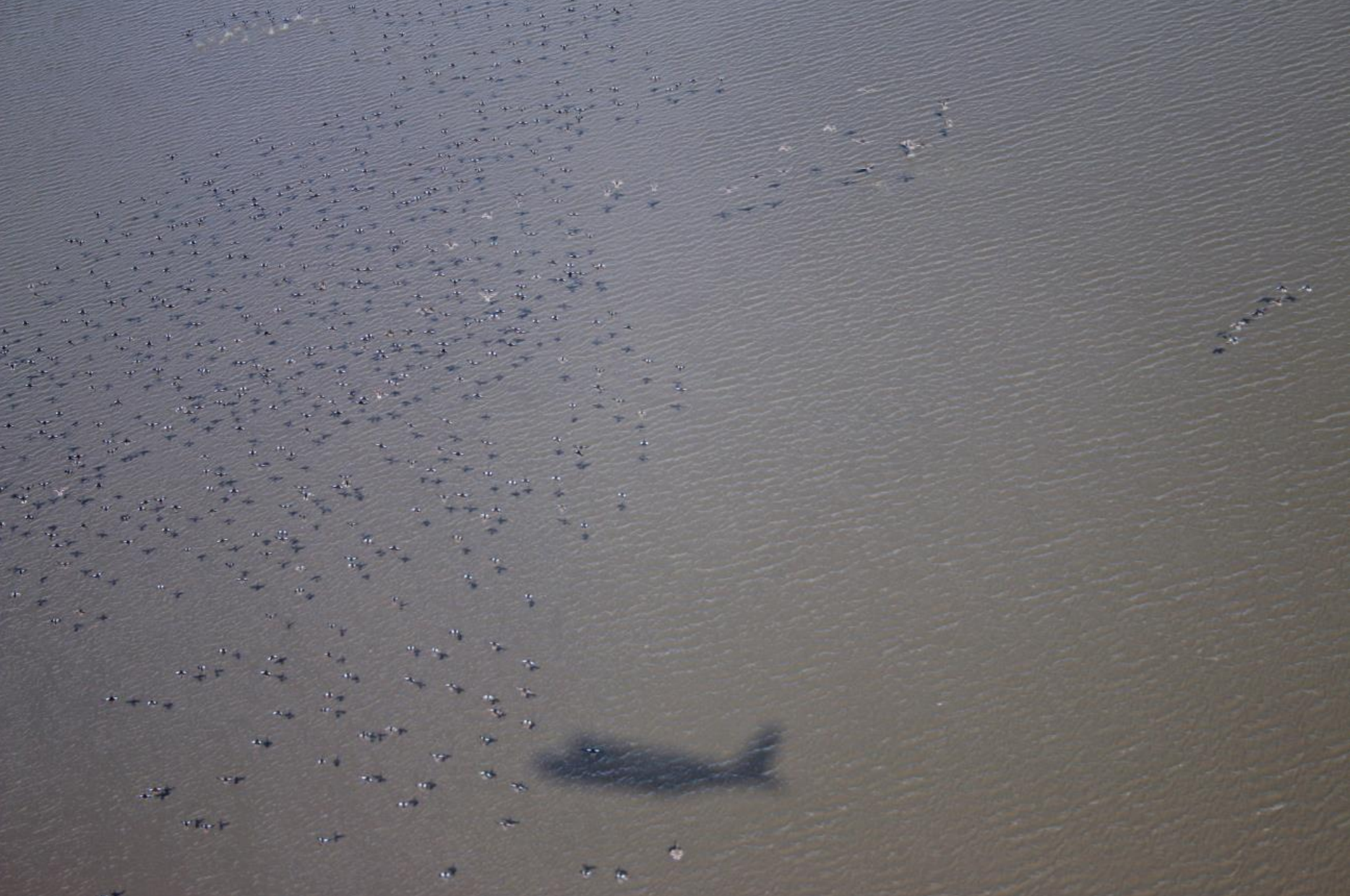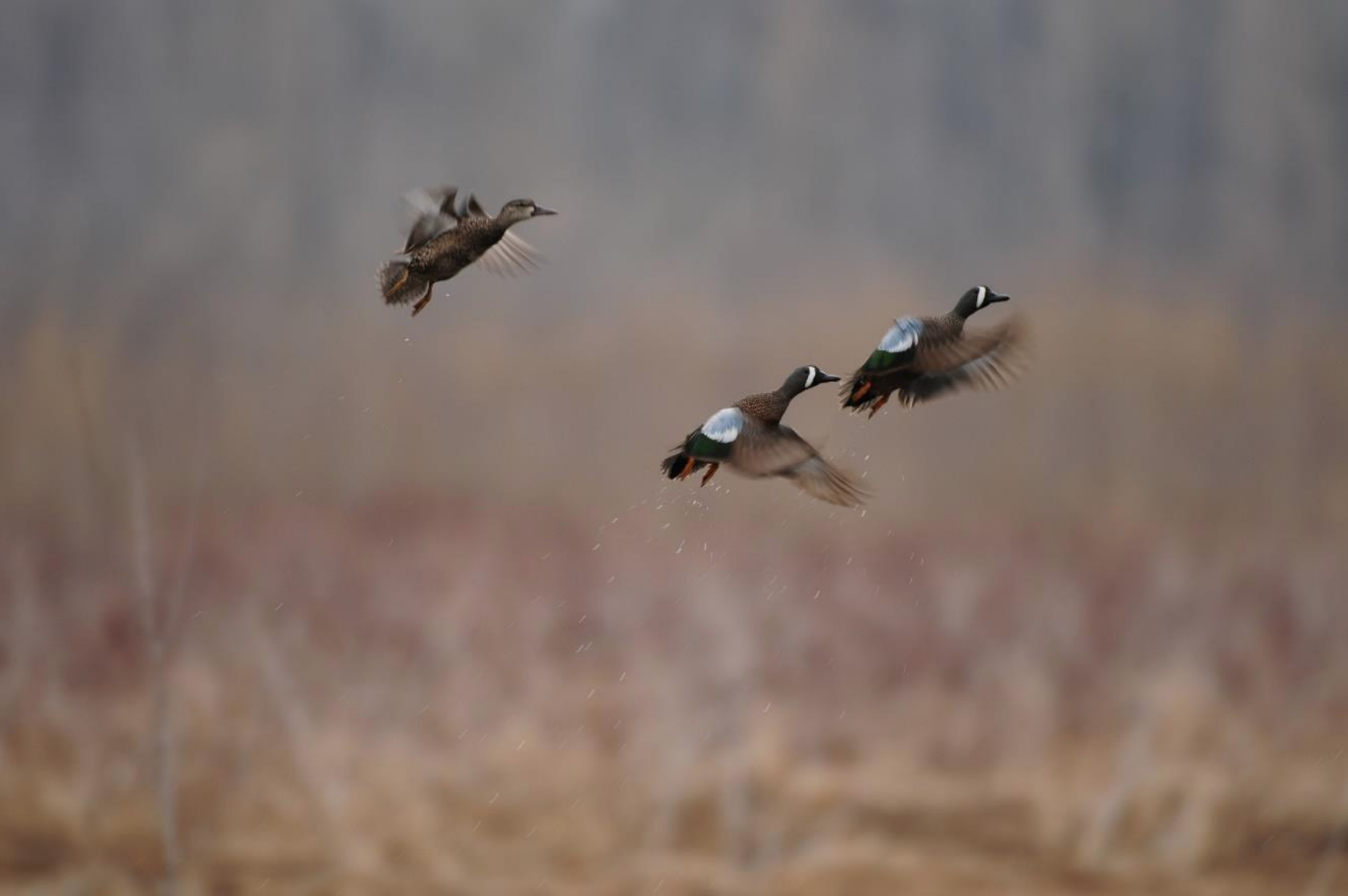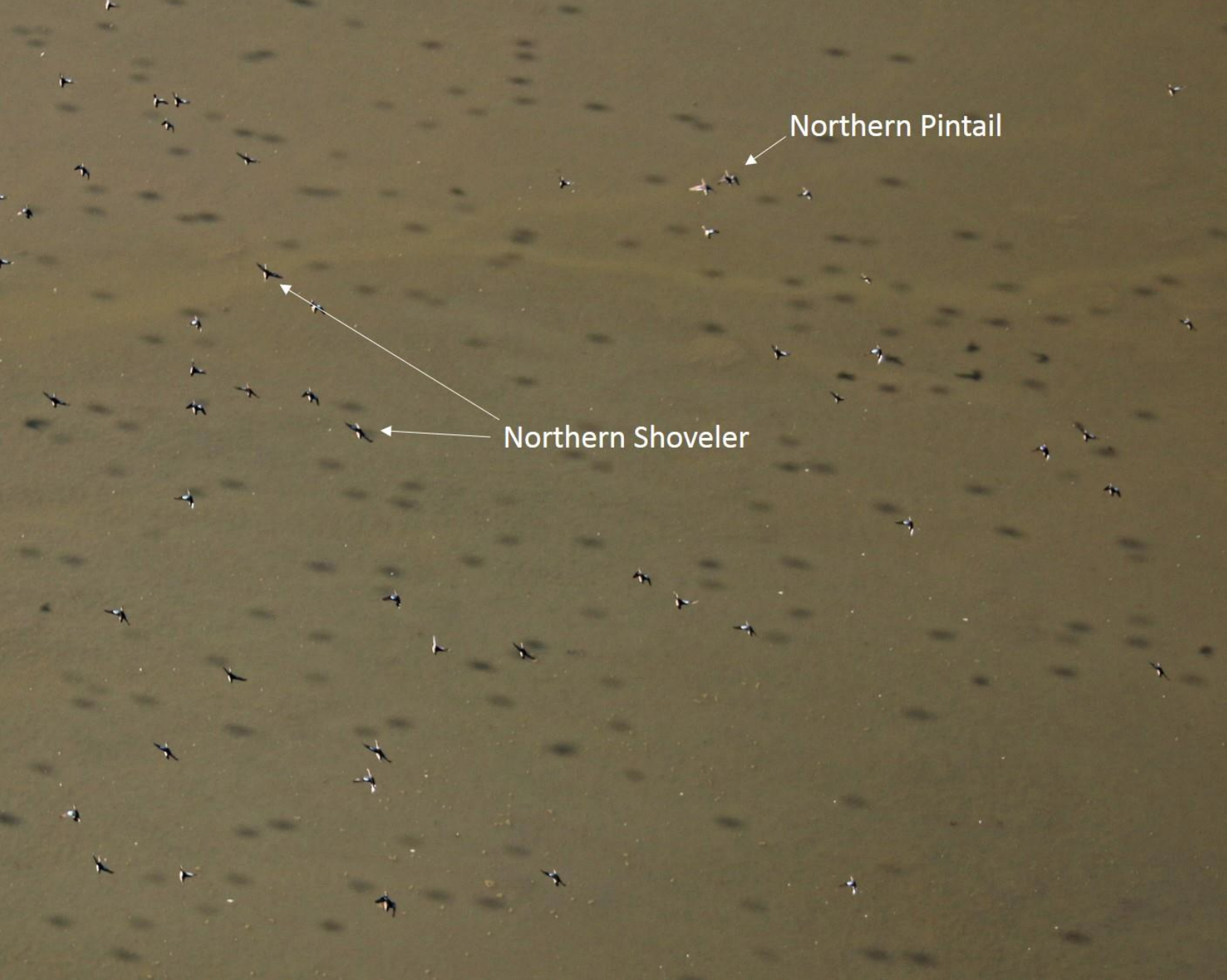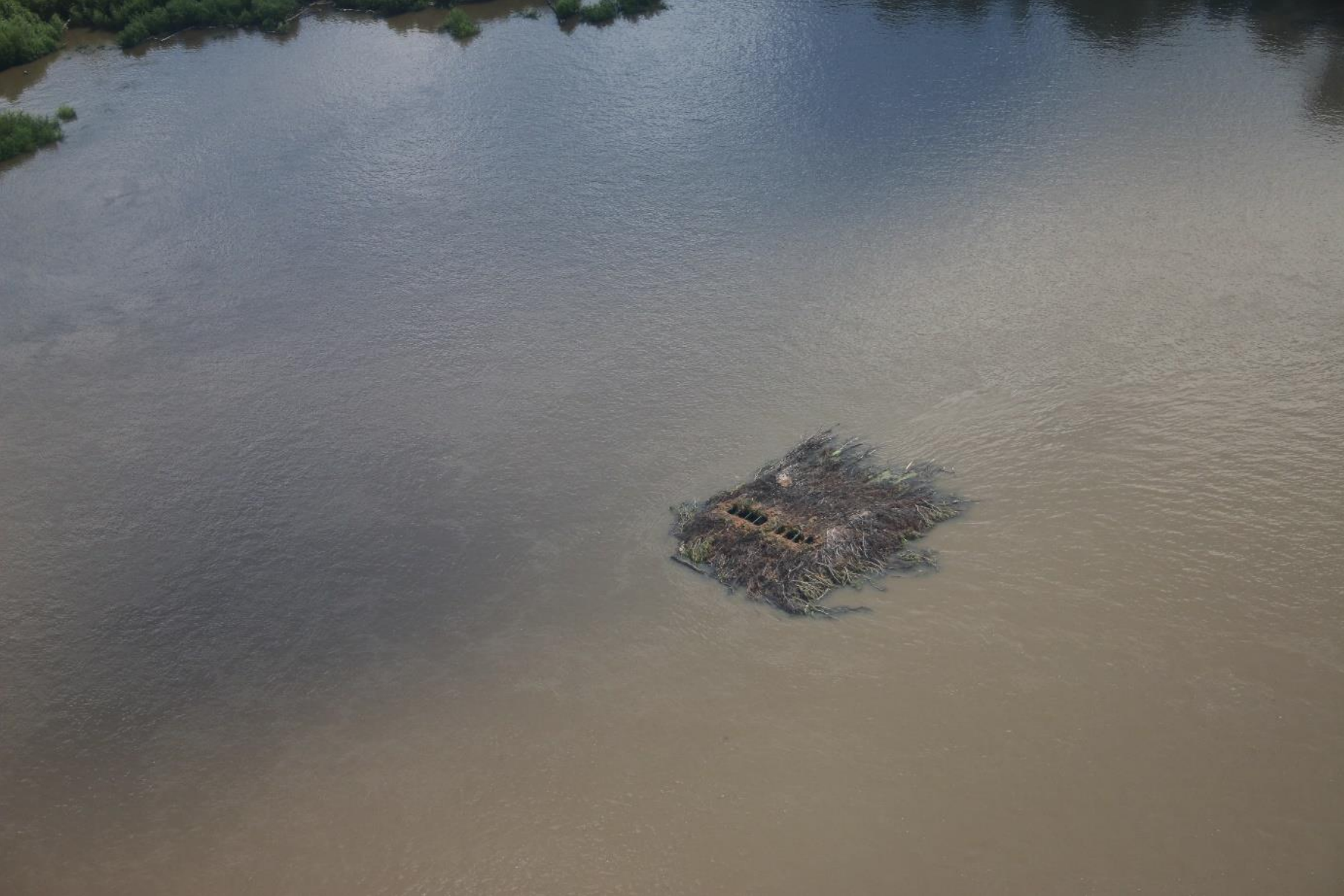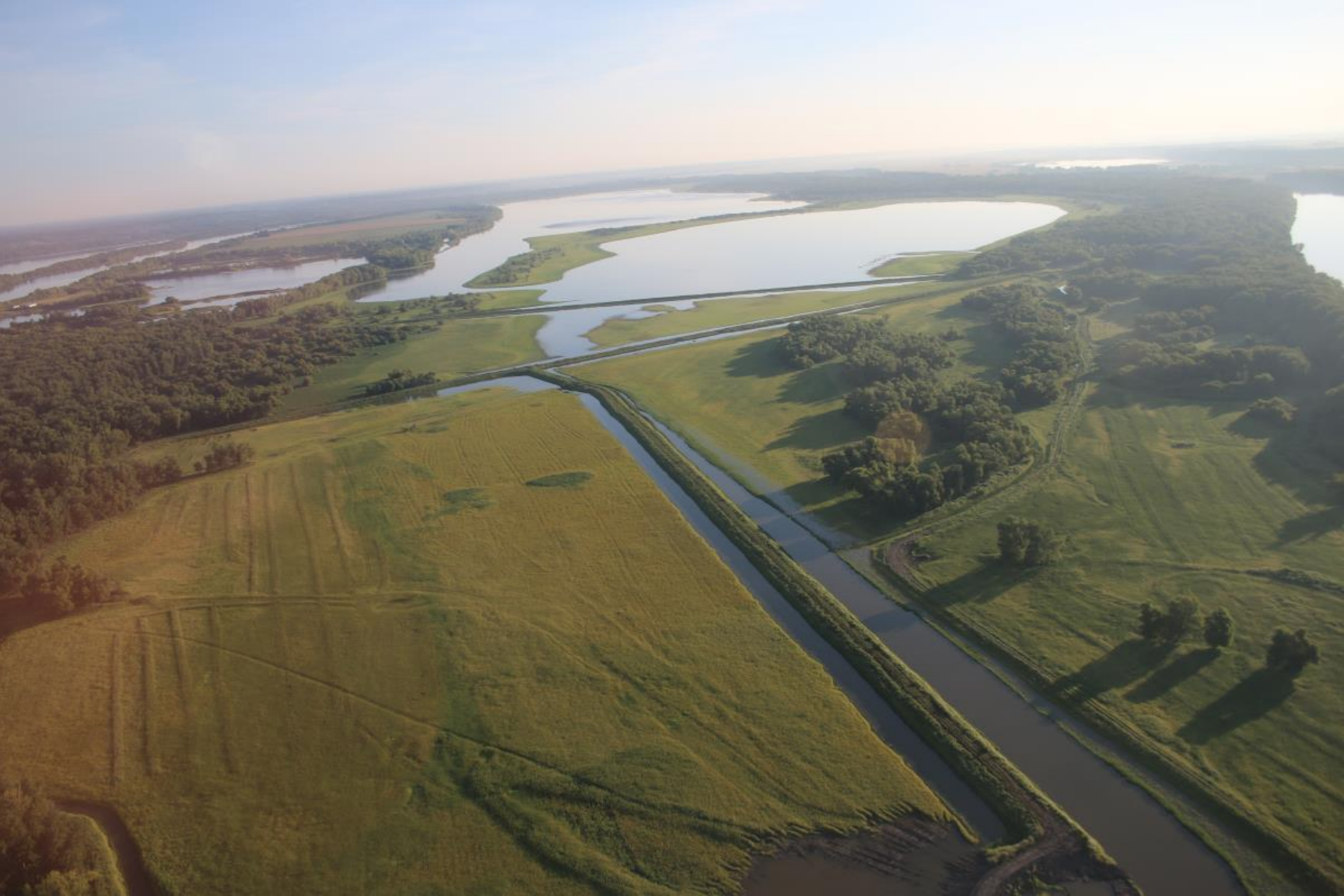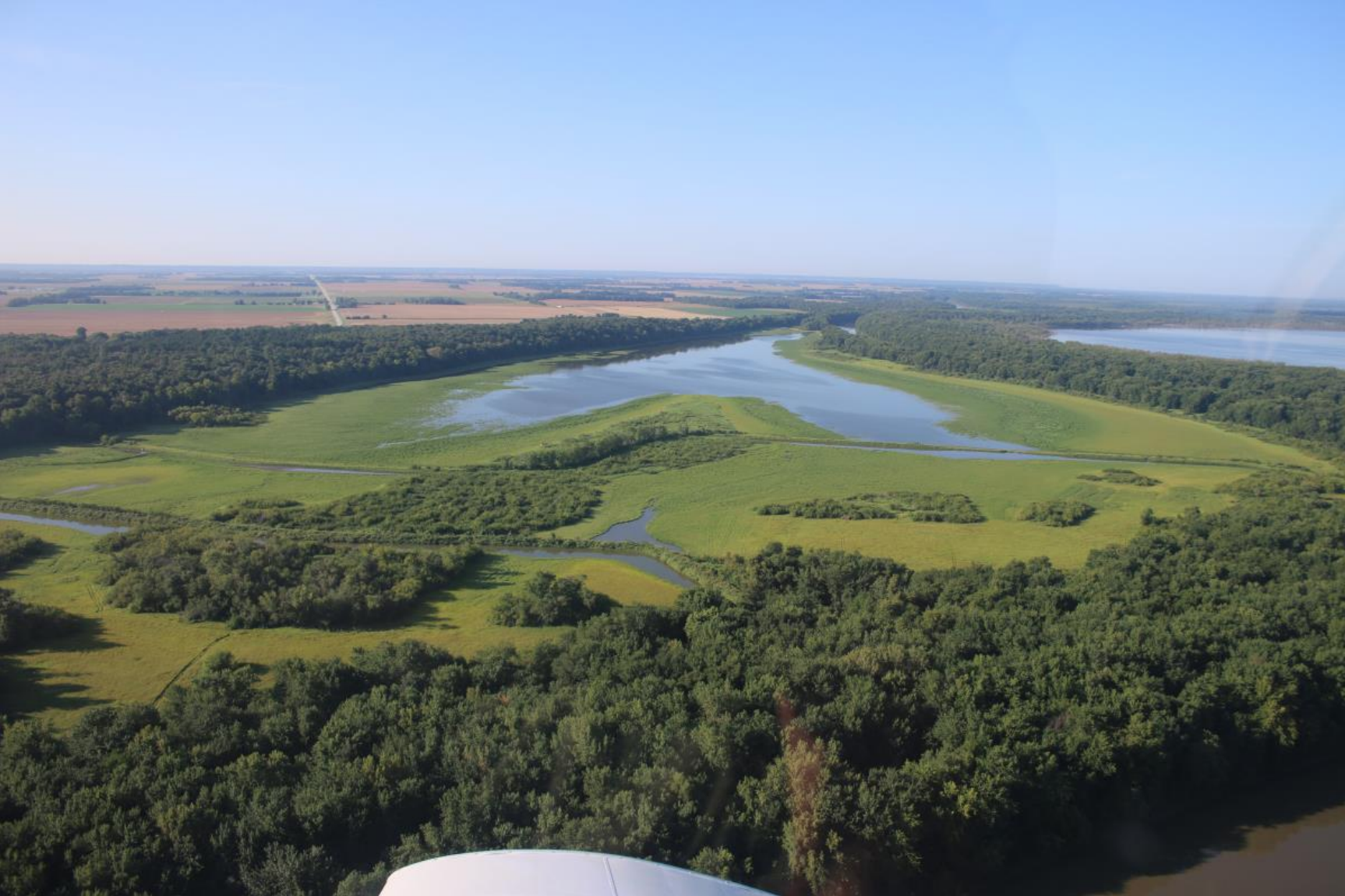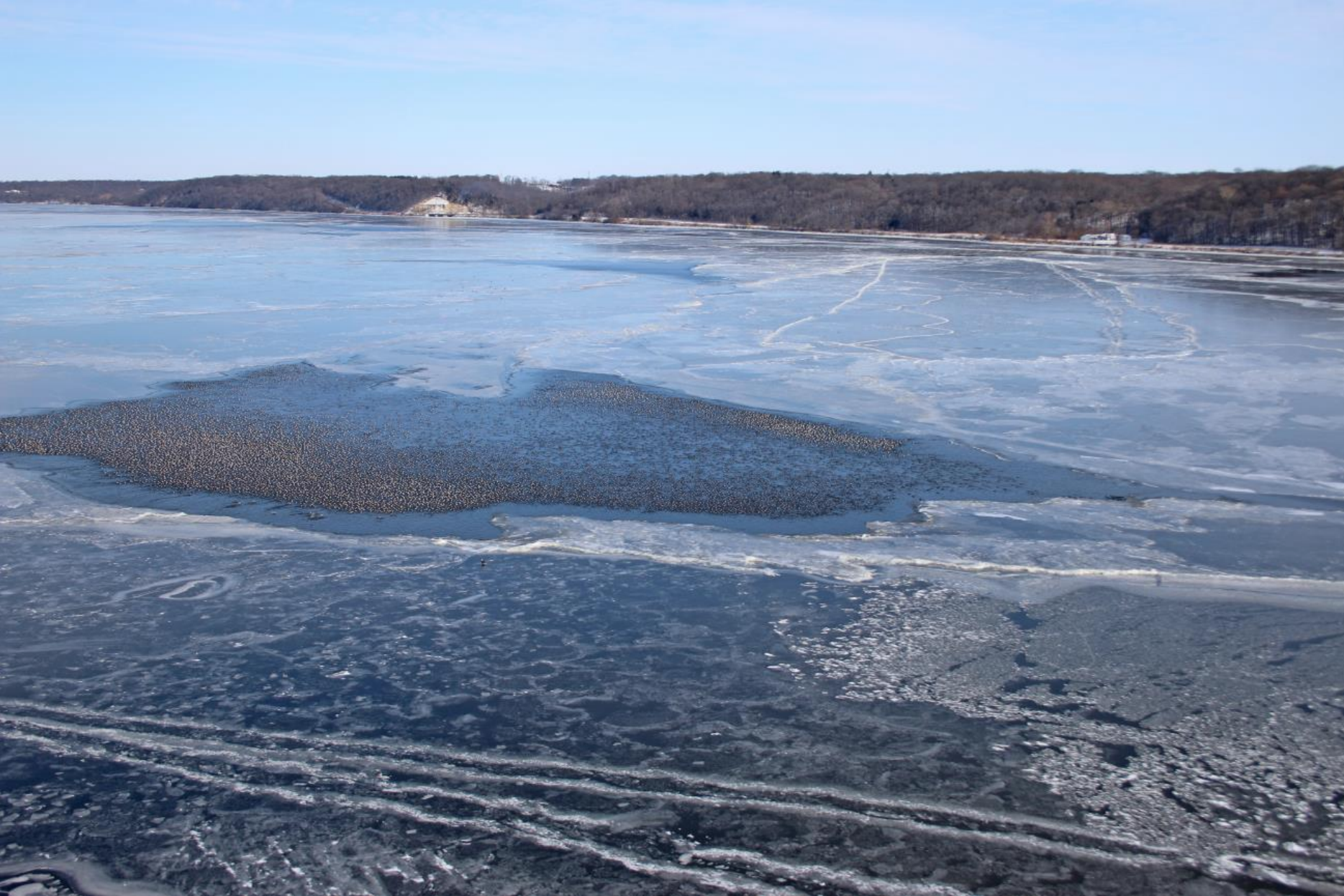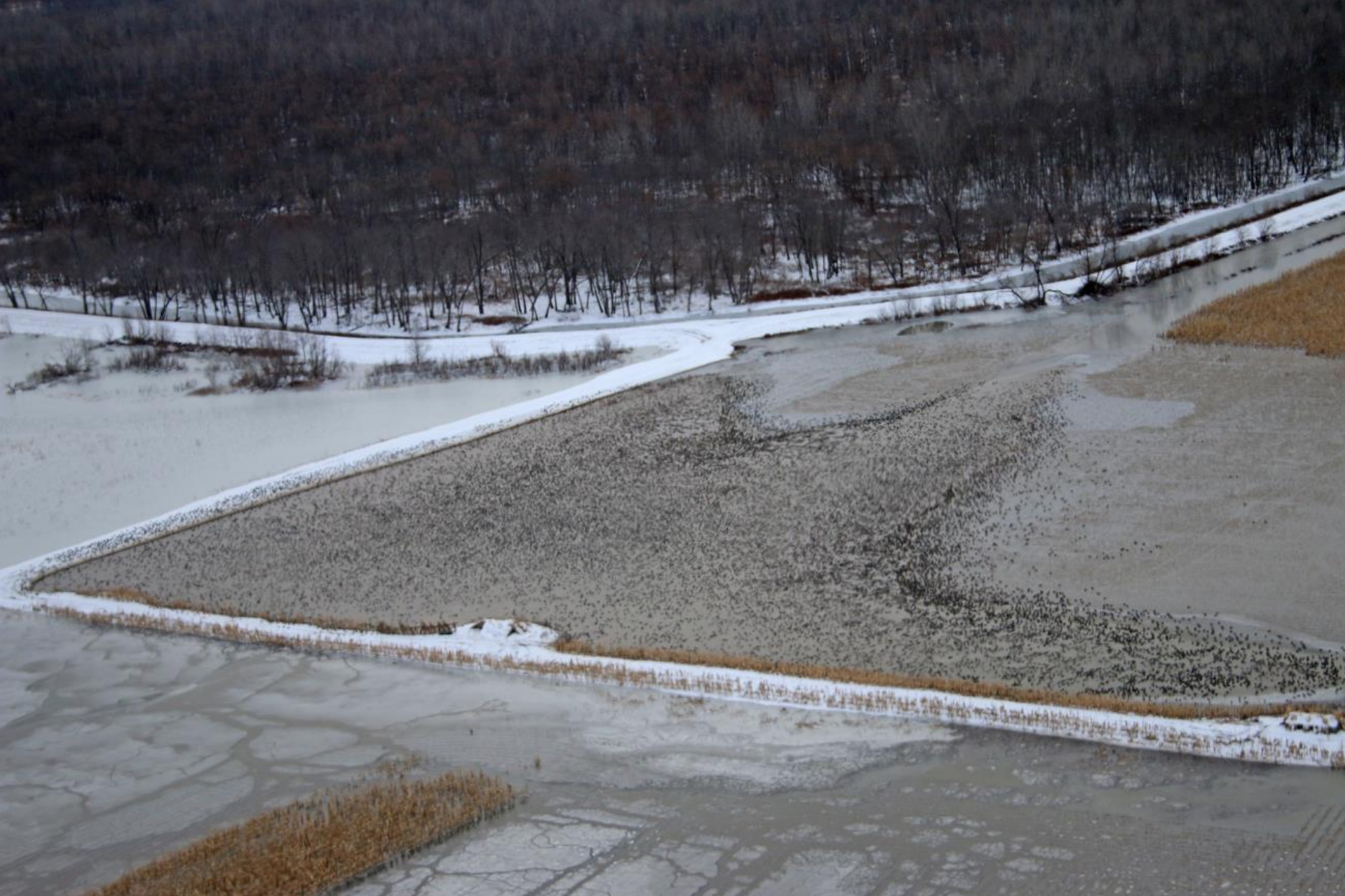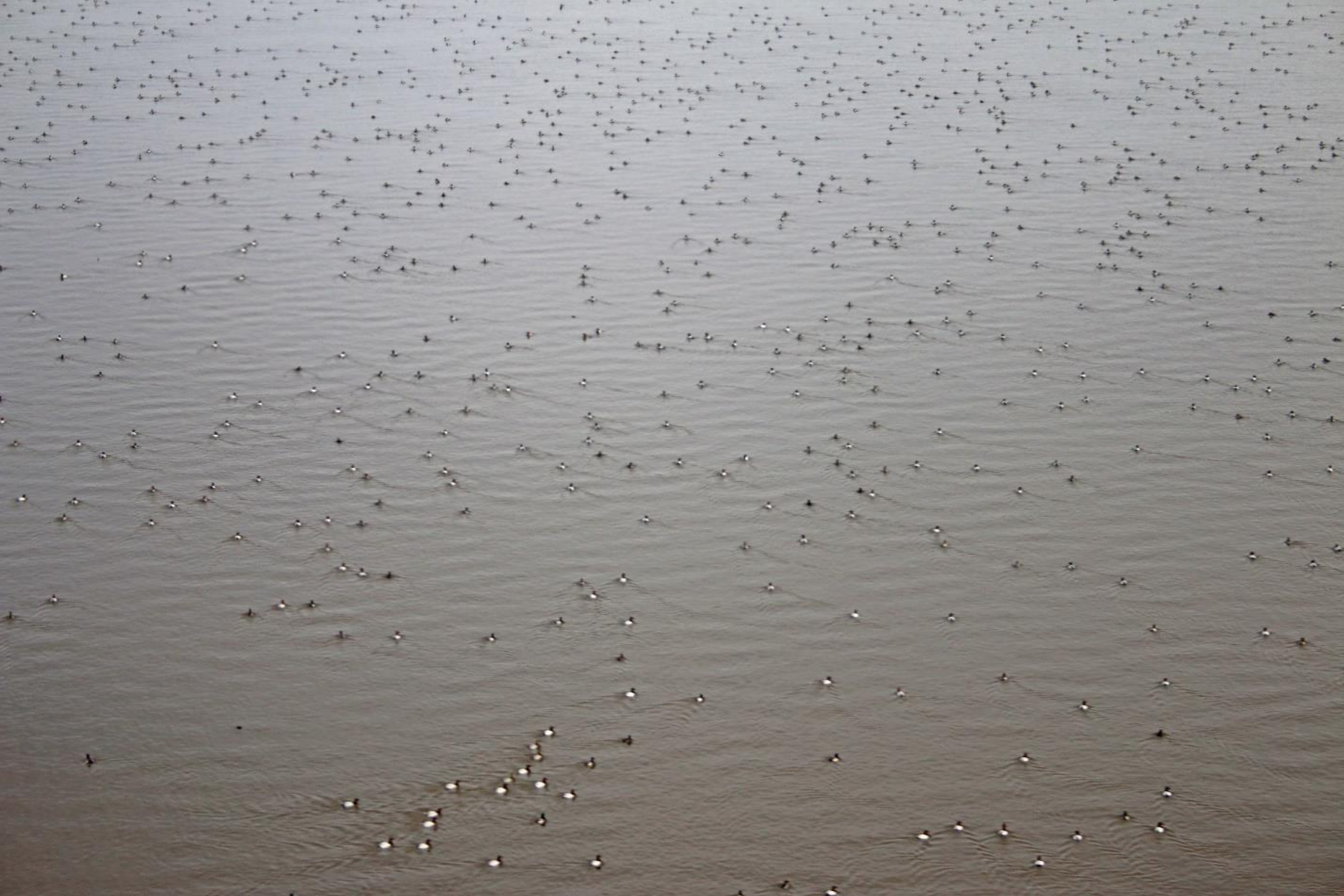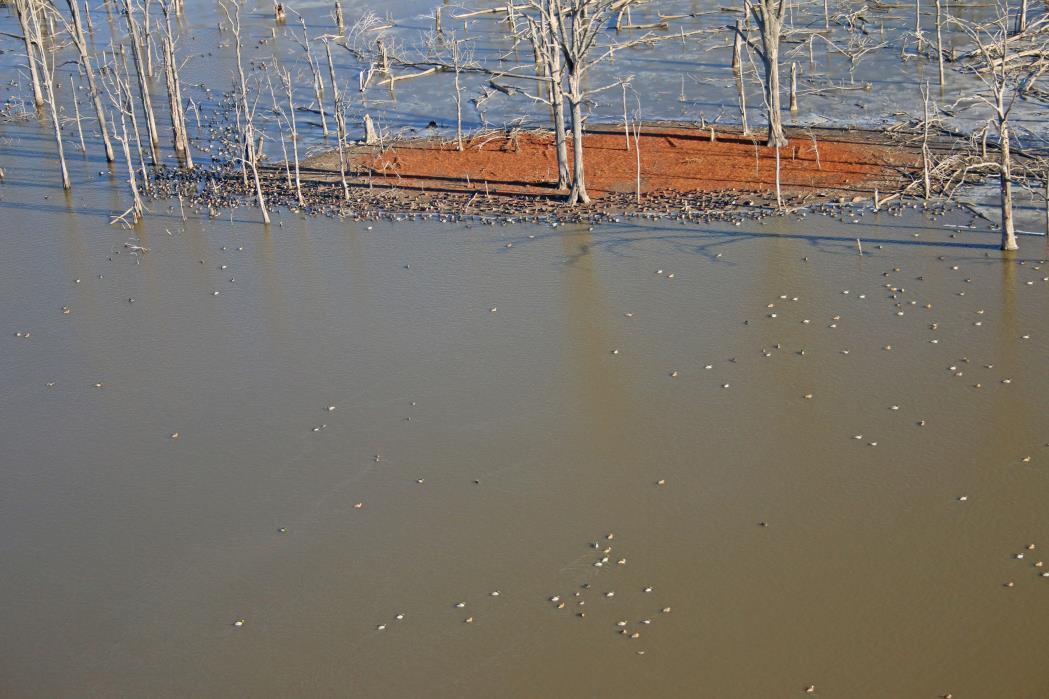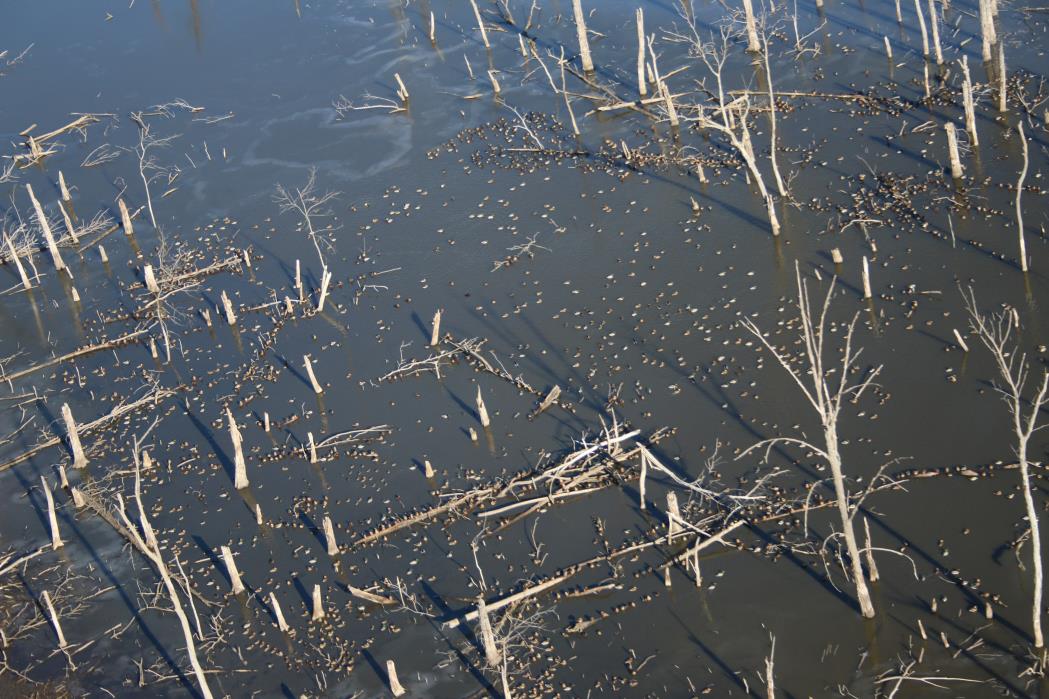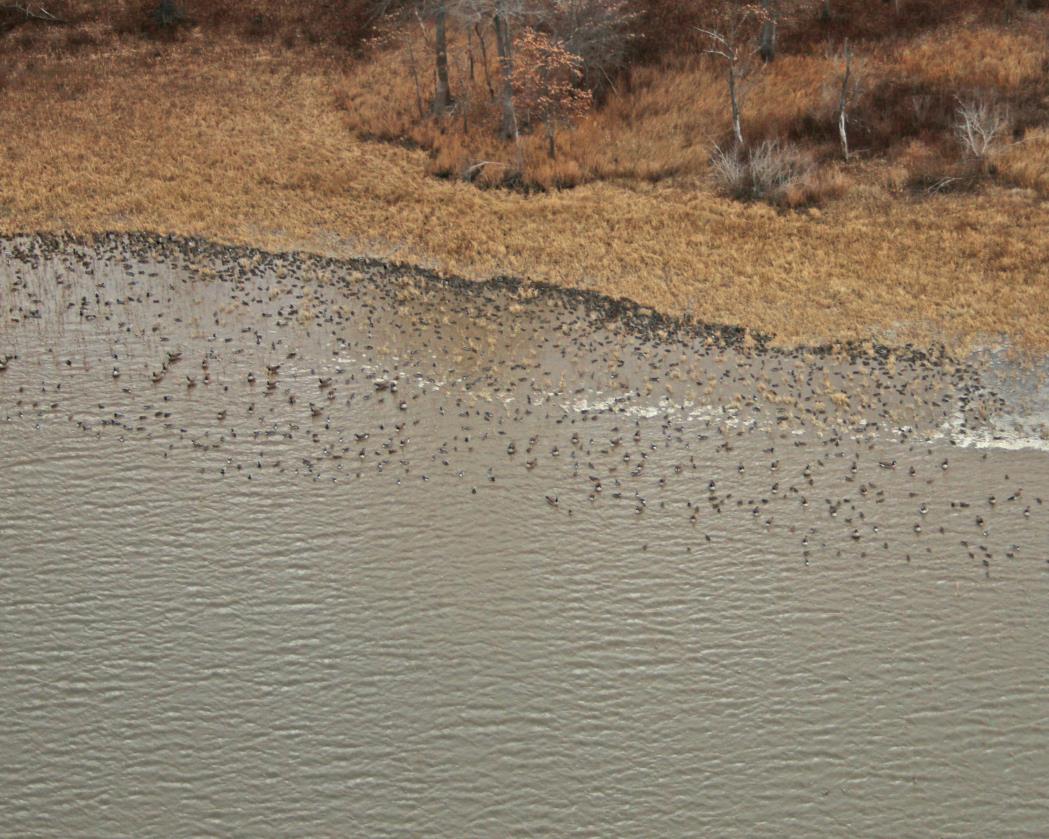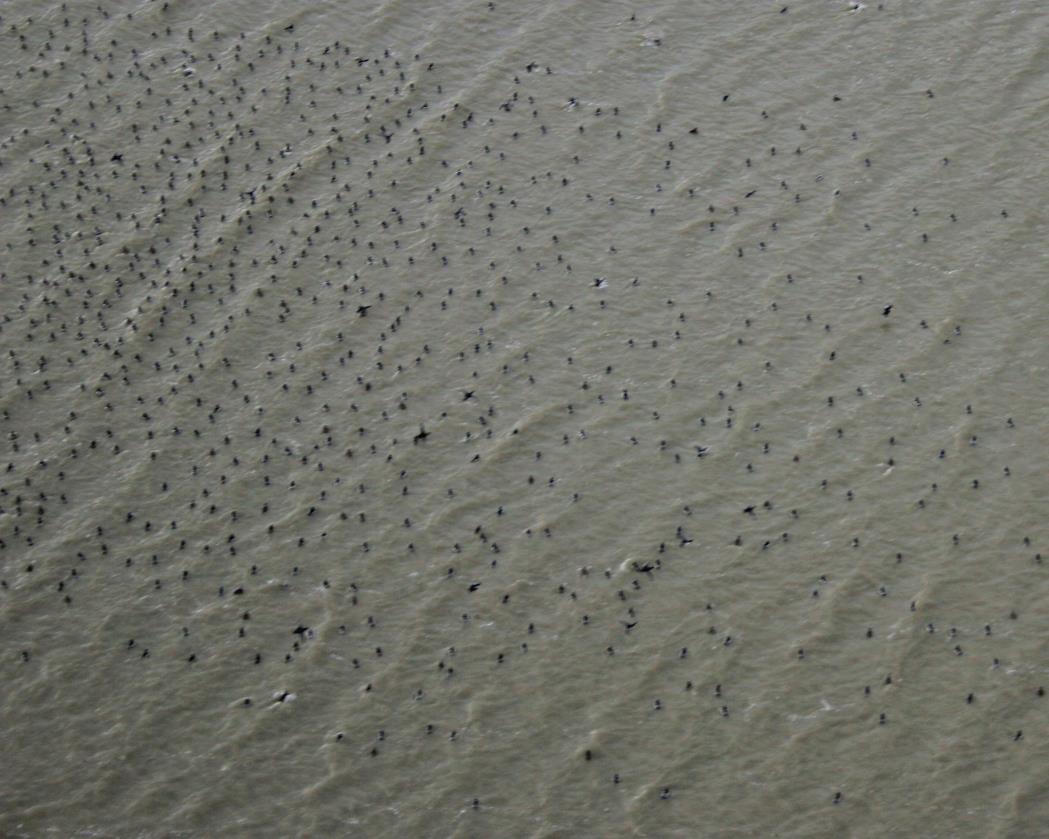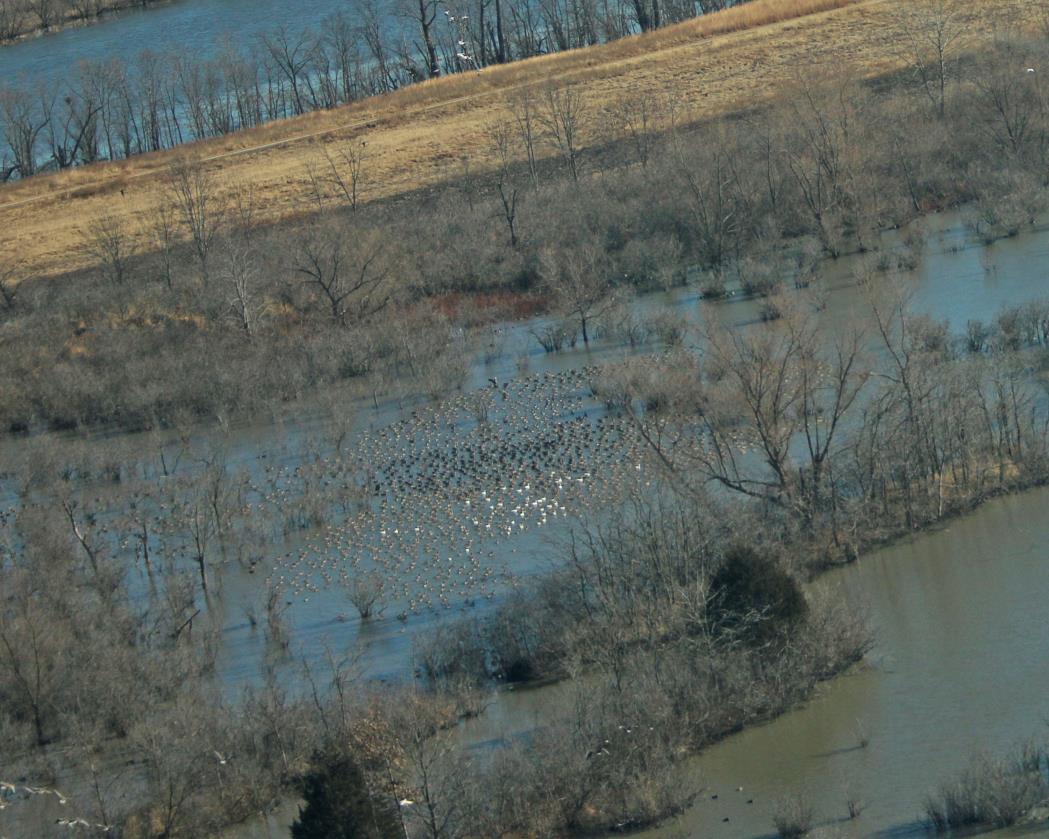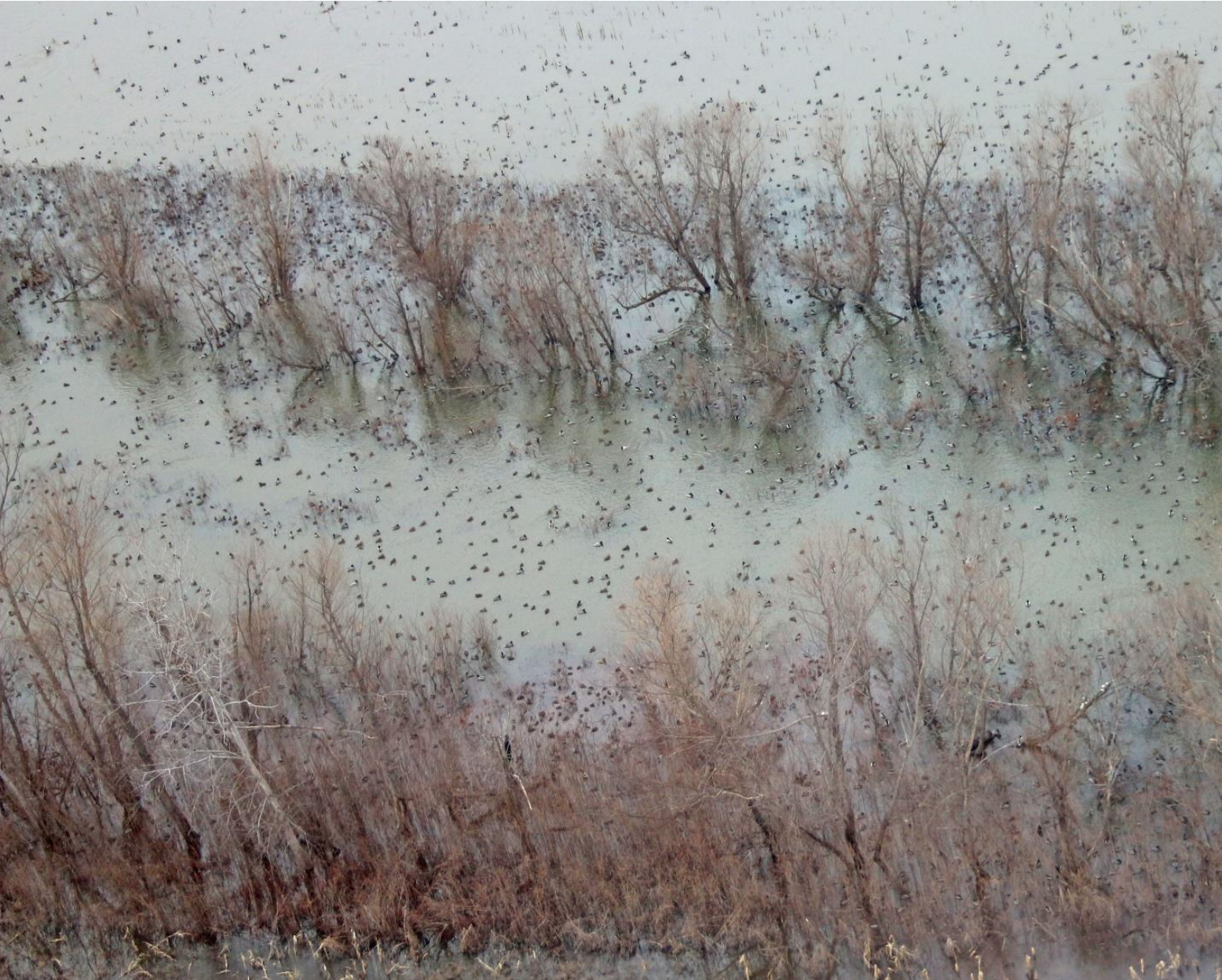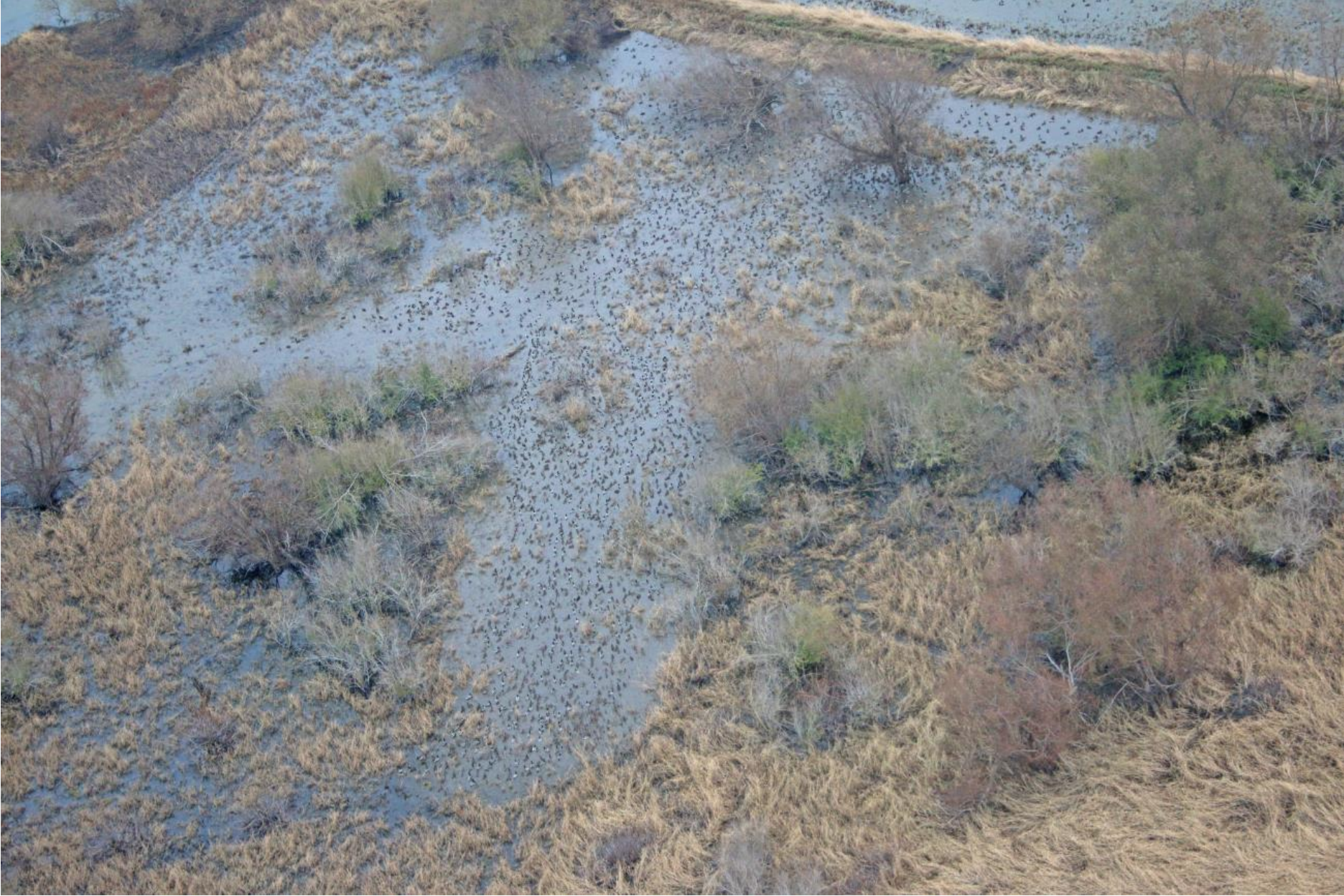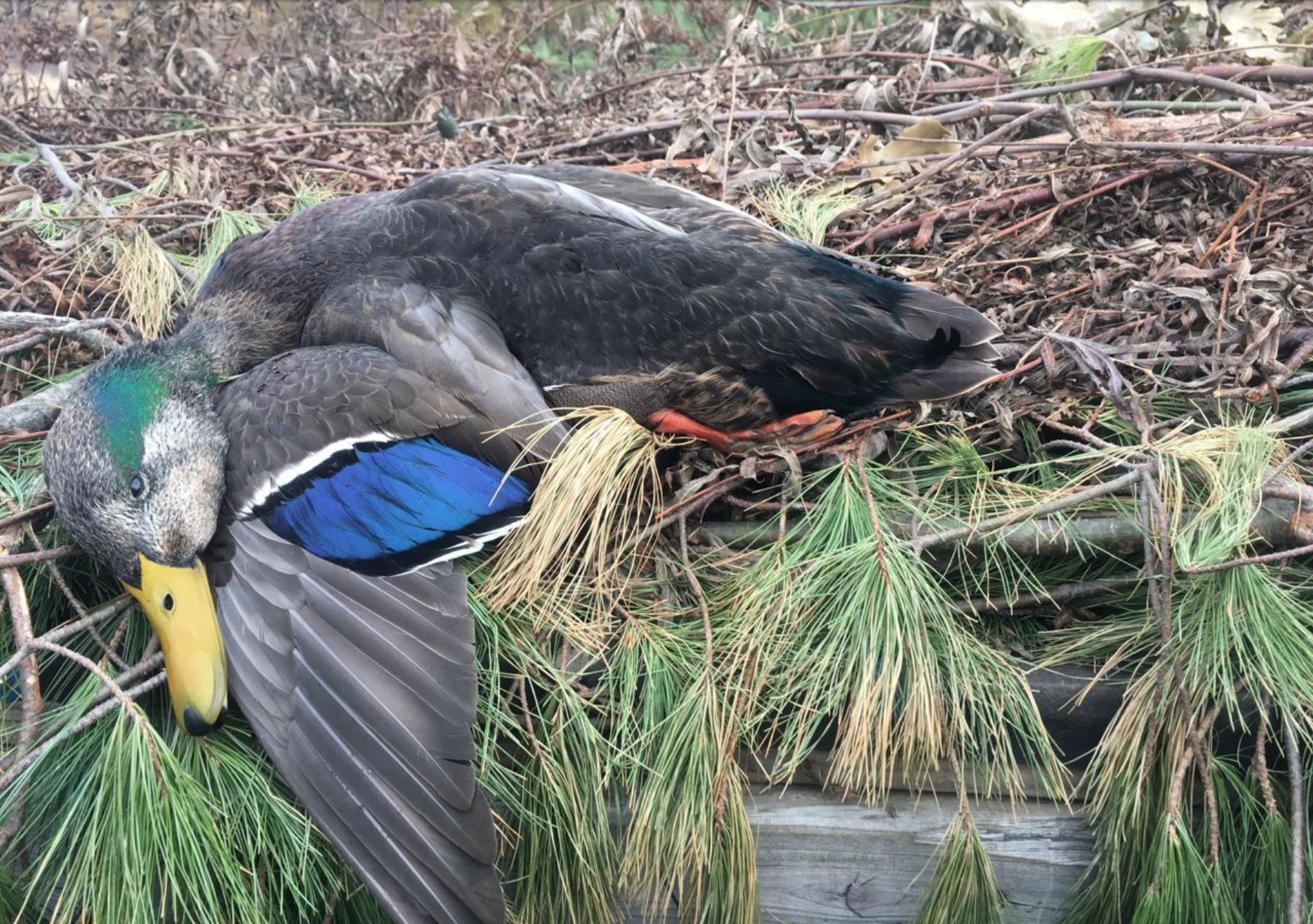Upper Illinois River
| LOCATION | % WET | % ICE | MALL | ABDU | NOPI | BWTE | GWTE | AMWI | GADW | NSHO | LESC | RNDU | CANV | REDH | RUDU | COGO | BUFF | COME | HOME | TOTAL | CAGO | GWFG | LSGO | AWPE | AMCO | AD | IMM | DCCO | SWAN |
|---|---|---|---|---|---|---|---|---|---|---|---|---|---|---|---|---|---|---|---|---|---|---|---|---|---|---|---|---|---|
| Turner Lake | 100 | 90 | 0 | 0 | 0 | 0 | 0 | 0 | 0 | 0 | 0 | 0 | 0 | 0 | 0 | 0 | 0 | 0 | 0 | 0 | 100 | 0 | 0 | 0 | 0 | 0 | 0 | 0 | 0 |
| Depue, Spring | 100 | 90 | 0 | 0 | 0 | 0 | 0 | 0 | 0 | 0 | 0 | 0 | 0 | 0 | 0 | 0 | 0 | 30 | 0 | 30 | 0 | 0 | 0 | 0 | 0 | 0 | 3 | 0 | 0 |
| Coleman Lake | 100 | 90 | 0 | 0 | 0 | 0 | 0 | 0 | 0 | 0 | 0 | 0 | 0 | 0 | 0 | 0 | 0 | 40 | 0 | 40 | 120 | 0 | 0 | 0 | 0 | 2 | 0 | 0 | 0 |
| Bureau Ponds | 100 | 100 | 0 | 0 | 0 | 0 | 0 | 0 | 0 | 0 | 0 | 0 | 0 | 0 | 0 | 0 | 0 | 0 | 0 | 0 | 0 | 0 | 0 | 0 | 0 | 0 | 0 | 0 | 0 |
| Goose Lake | 100 | 90 | 0 | 0 | 0 | 0 | 0 | 0 | 0 | 0 | 0 | 0 | 0 | 0 | 0 | 100 | 0 | 300 | 0 | 400 | 0 | 5 | 0 | 0 | 0 | 2 | 0 | 0 | 10 |
| Senachwine Lake | 100 | 70 | 0 | 0 | 0 | 0 | 0 | 0 | 0 | 0 | 10 | 0 | 100 | 0 | 0 | 30 | 0 | 10 | 0 | 150 | 0 | 0 | 0 | 0 | 0 | 0 | 0 | 0 | 0 |
| Hennepin/Hopper | 100 | 90 | 50 | 0 | 0 | 0 | 0 | 0 | 0 | 0 | 0 | 0 | 0 | 0 | 0 | 10 | 0 | 150 | 0 | 210 | 20 | 350 | 0 | 0 | 0 | 0 | 0 | 0 | 10 |
| Swan Lake | 100 | 100 | 0 | 0 | 0 | 0 | 0 | 0 | 0 | 0 | 0 | 0 | 0 | 0 | 0 | 0 | 0 | 0 | 0 | 0 | 10 | 0 | 0 | 0 | 0 | 1 | 0 | 0 | 0 |
| Sawmill Lake | 100 | 90 | 0 | 0 | 0 | 0 | 0 | 0 | 0 | 0 | 10 | 0 | 5 | 0 | 0 | 0 | 0 | 0 | 0 | 15 | 0 | 0 | 0 | 0 | 0 | 3 | 7 | 0 | 0 |
| Billsbach Lake | 100 | 70 | 0 | 0 | 0 | 0 | 0 | 0 | 0 | 0 | 100 | 0 | 200 | 0 | 0 | 0 | 0 | 0 | 0 | 300 | 0 | 0 | 0 | 0 | 0 | 0 | 0 | 0 | 0 |
| Weis Lake | 100 | 100 | 0 | 0 | 0 | 0 | 0 | 0 | 0 | 0 | 0 | 0 | 0 | 0 | 0 | 0 | 0 | 0 | 0 | 0 | 0 | 0 | 0 | 0 | 0 | 0 | 0 | 0 | 0 |
| Sparland | 100 | 90 | 0 | 0 | 0 | 0 | 0 | 0 | 0 | 0 | 0 | 0 | 100 | 0 | 0 | 0 | 0 | 10 | 0 | 110 | 0 | 0 | 0 | 0 | 0 | 1 | 0 | 0 | 0 |
| Wightman Lake | 100 | 80 | 0 | 0 | 0 | 0 | 0 | 0 | 0 | 0 | 0 | 0 | 0 | 0 | 0 | 0 | 0 | 15 | 0 | 15 | 0 | 0 | 0 | 0 | 0 | 0 | 0 | 0 | 0 |
| Sawyer Slough | 100 | 90 | 130 | 0 | 0 | 0 | 0 | 0 | 0 | 0 | 0 | 0 | 10 | 0 | 0 | 10 | 0 | 100 | 0 | 250 | 600 | 1000 | 0 | 0 | 0 | 0 | 1 | 0 | 0 |
| Hitchcock Slough | 100 | 90 | 10 | 0 | 0 | 0 | 0 | 0 | 0 | 0 | 0 | 0 | 0 | 0 | 0 | 0 | 0 | 100 | 0 | 110 | 60 | 0 | 0 | 0 | 0 | 0 | 0 | 0 | 0 |
| Babbs Slough | 100 | 90 | 0 | 0 | 0 | 0 | 0 | 0 | 0 | 0 | 30 | 0 | 200 | 0 | 0 | 10 | 0 | 0 | 0 | 240 | 10 | 0 | 0 | 0 | 0 | 0 | 0 | 0 | 0 |
| Meadow Lake | 100 | 90 | 0 | 0 | 0 | 0 | 0 | 0 | 0 | 0 | 0 | 0 | 0 | 0 | 0 | 0 | 0 | 200 | 0 | 200 | 0 | 0 | 0 | 0 | 0 | 1 | 0 | 0 | 0 |
| Douglas Lake | 100 | 90 | 2500 | 0 | 0 | 0 | 0 | 0 | 0 | 0 | 510 | 0 | 1300 | 0 | 0 | 100 | 0 | 200 | 0 | 4610 | 300 | 1500 | 0 | 0 | 0 | 0 | 1 | 0 | 0 |
| Goose Lake | 100 | 90 | 20 | 0 | 0 | 0 | 0 | 0 | 0 | 0 | 300 | 0 | 1600 | 0 | 0 | 0 | 0 | 105 | 0 | 2025 | 0 | 0 | 0 | 0 | 0 | 0 | 0 | 0 | 0 |
| Upper Peoria | 100 | 70 | 20 | 0 | 0 | 0 | 0 | 0 | 0 | 0 | 3120 | 0 | 1100 | 0 | 100 | 810 | 0 | 320 | 0 | 5470 | 30 | 0 | 0 | 0 | 0 | 3 | 3 | 0 | 0 |
| Lower Peoria | 100 | 90 | 0 | 0 | 0 | 0 | 0 | 0 | 0 | 0 | 10 | 0 | 0 | 0 | 0 | 0 | 0 | 0 | 0 | 10 | 190 | 0 | 0 | 0 | 0 | 0 | 1 | 0 | 0 |
| Total Upper Illinois | 2730 | 0 | 0 | 0 | 0 | 0 | 0 | 0 | 4090 | 0 | 4615 | 0 | 100 | 1070 | 0 | 1580 | 0 | 14185 | 1440 | 2855 | 0 | 0 | 0 | 13 | 16 | 0 | 20 |
Lower Illinois River
| LOCATION | % WET | % ICE | MALL | ABDU | NOPI | BWTE | GWTE | AMWI | GADW | NSHO | LESC | RNDU | CANV | REDH | RUDU | COGO | BUFF | COME | HOME | TOTAL | CAGO | GWFG | LSGO | AWPE | AMCO | AD | IMM | DCCO | SWAN | |
|---|---|---|---|---|---|---|---|---|---|---|---|---|---|---|---|---|---|---|---|---|---|---|---|---|---|---|---|---|---|---|
| Pekin Lake | 100 | 100 | 0 | 0 | 0 | 0 | 0 | 0 | 0 | 0 | 0 | 0 | 0 | 0 | 0 | 0 | 0 | 0 | 0 | 0 | 0 | 0 | 0 | 0 | 0 | 0 | 1 | 0 | 0 | |
| Powerton Lake | 100 | 0 | 100 | 0 | 0 | 0 | 0 | 0 | 100 | 0 | 0 | 0 | 0 | 0 | 0 | 0 | 0 | 405 | 0 | 605 | 5 | 100 | 0 | 0 | 0 | 1 | 0 | 0 | 0 | |
| Spring Lake | 100 | 90 | 20 | 0 | 0 | 0 | 0 | 0 | 0 | 0 | 0 | 0 | 0 | 0 | 0 | 100 | 0 | 1930 | 10 | 2060 | 460 | 4000 | 5 | 0 | 0 | 0 | 0 | 0 | 325 | |
| Spring Lake Bottoms | 100 | 100 | 10 | 0 | 0 | 0 | 0 | 0 | 45 | 0 | 0 | 0 | 0 | 0 | 0 | 0 | 0 | 0 | 0 | 55 | 0 | 0 | 0 | 0 | 0 | 0 | 0 | 0 | 0 | |
| Goose Lake | 100 | 80 | 5 | 0 | 0 | 0 | 0 | 0 | 0 | 0 | 3600 | 0 | 1650 | 0 | 0 | 0 | 0 | 130 | 0 | 5385 | 0 | 0 | 0 | 0 | 0 | 0 | 0 | 0 | 0 | |
| Rice Lake | 100 | 90 | 0 | 0 | 0 | 0 | 0 | 0 | 0 | 0 | 0 | 0 | 0 | 0 | 0 | 0 | 0 | 100 | 0 | 100 | 100 | 0 | 0 | 0 | 0 | 0 | 0 | 0 | 0 | |
| Big Lake | 100 | 90 | 0 | 0 | 0 | 0 | 0 | 0 | 0 | 0 | 20 | 0 | 20 | 0 | 0 | 20 | 0 | 25 | 0 | 85 | 30 | 200 | 0 | 0 | 0 | 1 | 0 | 0 | 0 | |
| Banner Marsh | 90 | 90 | 0 | 0 | 0 | 0 | 0 | 0 | 0 | 0 | 0 | 0 | 0 | 0 | 0 | 10 | 0 | 150 | 5 | 165 | 405 | 2000 | 0 | 0 | 0 | 0 | 0 | 0 | 105 | |
| Duck Creek | 100 | 30 | 4810 | 0 | 0 | 0 | 0 | 0 | 300 | 0 | 10 | 0 | 0 | 0 | 0 | 100 | 0 | 510 | 0 | 5730 | 1550 | 23200 | 20300 | 0 | 0 | 0 | 0 | 0 | 135 | |
| Clear Lake | 100 | 90 | 0 | 0 | 0 | 0 | 0 | 0 | 0 | 0 | 100 | 0 | 100 | 200 | 0 | 0 | 0 | 0 | 0 | 400 | 410 | 0 | 0 | 0 | 0 | 0 | 0 | 0 | 0 | |
| Chautauqua | 100 | 80 | 50 | 0 | 0 | 0 | 0 | 0 | 0 | 0 | 200 | 0 | 0 | 0 | 100 | 220 | 0 | 110 | 0 | 680 | 310 | 2000 | 5 | 0 | 0 | 1 | 1 | 0 | 0 | |
| Quiver Creek | 100 | 90 | 1400 | 0 | 0 | 0 | 0 | 0 | 300 | 0 | 50 | 0 | 200 | 0 | 0 | 0 | 0 | 0 | 0 | 1950 | 780 | 10100 | 5 | 0 | 0 | 2 | 0 | 0 | 0 | |
| Quiver Lake | 100 | 80 | 0 | 0 | 0 | 0 | 0 | 0 | 0 | 0 | 0 | 0 | 0 | 0 | 0 | 0 | 0 | 0 | 0 | 0 | 100 | 5 | 0 | 0 | 0 | 0 | 1 | 0 | 0 | |
| Emiquon/Spoon Btm | 70 | 90 | 860 | 0 | 0 | 0 | 0 | 0 | 0 | 0 | 2500 | 0 | 1000 | 250 | 0 | 315 | 0 | 225 | 0 | 5150 | 740 | 2600 | 140000 | 0 | 0 | 18 | 19 | 0 | 510 | |
| Matanza Lake | 100 | 90 | 0 | 0 | 0 | 0 | 0 | 0 | 0 | 0 | 0 | 0 | 0 | 0 | 0 | 200 | 0 | 20 | 0 | 220 | 110 | 500 | 0 | 0 | 0 | 0 | 0 | 0 | 100 | |
| Bath Lake | 100 | 90 | 0 | 0 | 0 | 0 | 0 | 0 | 0 | 0 | 0 | 0 | 0 | 0 | 0 | 10 | 0 | 100 | 0 | 110 | 25 | 10 | 0 | 0 | 0 | 0 | 0 | 0 | 0 | |
| Moscow Lake | 100 | 90 | 100 | 0 | 0 | 0 | 0 | 0 | 0 | 0 | 100 | 0 | 0 | 0 | 0 | 200 | 0 | 0 | 0 | 400 | 0 | 0 | 0 | 0 | 0 | 0 | 0 | 0 | 0 | |
| Jack Lake | 100 | 90 | 0 | 0 | 0 | 0 | 0 | 0 | 0 | 0 | 0 | 0 | 0 | 0 | 0 | 0 | 0 | 0 | 0 | 0 | 0 | 0 | 0 | 0 | 0 | 0 | 1 | 0 | 0 | |
| Grass Lake | 100 | 90 | 0 | 0 | 0 | 0 | 0 | 0 | 0 | 0 | 3000 | 0 | 300 | 0 | 0 | 200 | 0 | 0 | 0 | 3500 | 200 | 200 | 0 | 0 | 0 | 0 | 0 | 0 | 0 | |
| Anderson Lake | 100 | 90 | 0 | 0 | 0 | 0 | 0 | 0 | 0 | 0 | 0 | 0 | 0 | 0 | 0 | 0 | 0 | 100 | 0 | 100 | 200 | 7200 | 26000 | 0 | 0 | 0 | 0 | 0 | 0 | |
| Snicarte Slough | 100 | 90 | 0 | 0 | 0 | 0 | 0 | 0 | 0 | 0 | 0 | 0 | 300 | 0 | 0 | 150 | 0 | 0 | 0 | 450 | 0 | 0 | 0 | 0 | 0 | 0 | 0 | 0 | 0 | |
| Ingram Lake | 100 | 90 | 0 | 0 | 0 | 0 | 0 | 0 | 0 | 0 | 0 | 0 | 0 | 0 | 0 | 0 | 0 | 0 | 0 | 0 | 0 | 0 | 0 | 0 | 0 | 0 | 0 | 0 | 0 | |
| Chain Lake | 100 | 80 | 0 | 0 | 0 | 0 | 0 | 0 | 0 | 0 | 1300 | 200 | 800 | 0 | 0 | 100 | 0 | 10 | 0 | 2410 | 10 | 0 | 0 | 0 | 0 | 0 | 0 | 0 | 0 | |
| Stewart Lake | 100 | 90 | 0 | 0 | 0 | 0 | 0 | 0 | 0 | 0 | 100 | 0 | 0 | 0 | 0 | 15 | 0 | 0 | 0 | 115 | 0 | 0 | 0 | 0 | 0 | 0 | 0 | 0 | 0 | |
| Crane Lake | 100 | 50 | 10 | 0 | 0 | 0 | 0 | 0 | 0 | 0 | 30 | 0 | 200 | 0 | 0 | 320 | 0 | 160 | 0 | 720 | 0 | 0 | 0 | 0 | 0 | 0 | 0 | 0 | 0 | |
| Cuba Island | 100 | 90 | 3000 | 0 | 0 | 0 | 0 | 0 | 0 | 0 | 500 | 500 | 1000 | 100 | 0 | 0 | 0 | 0 | 0 | 5100 | 800 | 4300 | 10 | 0 | 0 | 2 | 0 | 0 | 950 | |
| Sanganois | 100 | 90 | 200 | 0 | 0 | 0 | 0 | 0 | 0 | 0 | 500 | 0 | 1050 | 0 | 0 | 0 | 0 | 300 | 0 | 2050 | 200 | 0 | 0 | 0 | 0 | 2 | 2 | 0 | 115 | |
| Treadway Lake | 100 | 90 | 0 | 0 | 0 | 0 | 0 | 0 | 0 | 0 | 100 | 1200 | 800 | 0 | 0 | 0 | 0 | 100 | 0 | 2200 | 100 | 0 | 0 | 0 | 0 | 0 | 0 | 0 | 0 | |
| Muscooten Bay | 100 | 100 | 0 | 0 | 0 | 0 | 0 | 0 | 0 | 0 | 0 | 0 | 0 | 0 | 0 | 0 | 0 | 0 | 0 | 0 | 0 | 0 | 0 | 0 | 0 | 0 | 0 | 0 | 0 | |
| Big Lake | 100 | 90 | 0 | 0 | 0 | 0 | 0 | 0 | 200 | 0 | 500 | 0 | 100 | 0 | 100 | 0 | 0 | 0 | 0 | 900 | 0 | 0 | 0 | 0 | 0 | 0 | 0 | 0 | 0 | |
| Meredosia Lake | 100 | 70 | 5300 | 0 | 0 | 0 | 0 | 0 | 0 | 0 | 2000 | 0 | 2650 | 0 | 0 | 300 | 0 | 1110 | 0 | 11360 | 200 | 200 | 3100 | 0 | 0 | 1 | 1 | 0 | 0 | |
| Smith Lake | 100 | 90 | 500 | 0 | 0 | 0 | 0 | 0 | 0 | 0 | 50 | 0 | 100 | 0 | 0 | 0 | 0 | 20 | 5 | 675 | 440 | 200 | 0 | 0 | 0 | 0 | 0 | 0 | 0 | |
| Spunky Bottoms | 100 | 90 | 500 | 0 | 0 | 0 | 0 | 0 | 0 | 0 | 0 | 0 | 0 | 0 | 0 | 100 | 0 | 0 | 0 | 600 | 720 | 1000 | 200 | 0 | 0 | 7 | 1 | 0 | 5 | |
| Total Lower Illinois | 16865 | 0 | 0 | 0 | 0 | 0 | 945 | 0 | 14660 | 1900 | 10270 | 550 | 200 | 2360 | 0 | 5505 | 20 | 53275 | 7895 | 57815 | 189625 | 0 | 0 | 35 | 27 | 0 | 2245 |
Upper Mississippi River
| LOCATION | % WET | % ICE | MALL | ABDU | NOPI | BWTE | GWTE | AMWI | GADW | NSHO | LESC | RNDU | CANV | REDH | RUDU | COGO | BUFF | COME | HOME | TOTAL | CAGO | GWFG | LSGO | AWPE | AMCO | AD | IMM | DCCO | SWAN |
|---|---|---|---|---|---|---|---|---|---|---|---|---|---|---|---|---|---|---|---|---|---|---|---|---|---|---|---|---|---|
| Muscatine - Moline | 100 | 90 | 0 | 0 | 0 | 0 | 0 | 0 | 0 | 0 | 0 | 0 | 0 | 0 | 0 | 2550 | 0 | 300 | 0 | 2850 | 1005 | 0 | 0 | 0 | 0 | 10 | 2 | 0 | 0 |
| Andalusia Refuge | 100 | 100 | 0 | 0 | 0 | 0 | 0 | 0 | 0 | 0 | 0 | 0 | 0 | 0 | 0 | 0 | 0 | 0 | 0 | 0 | 0 | 0 | 0 | 0 | 0 | 0 | 0 | 0 | 0 |
| Louisa - Muscatine | 100 | 50 | 0 | 0 | 0 | 0 | 0 | 0 | 0 | 0 | 0 | 0 | 0 | 0 | 0 | 1490 | 0 | 935 | 0 | 2425 | 2250 | 300 | 0 | 0 | 0 | 6 | 4 | 0 | 0 |
| Louisa Refuge | 100 | 100 | 0 | 0 | 0 | 0 | 0 | 0 | 0 | 0 | 0 | 0 | 0 | 0 | 0 | 0 | 0 | 0 | 0 | 0 | 0 | 0 | 0 | 0 | 0 | 0 | 0 | 0 | 0 |
| New Boston | 100 | 90 | 0 | 0 | 0 | 0 | 0 | 0 | 0 | 0 | 0 | 0 | 0 | 0 | 0 | 0 | 0 | 200 | 0 | 200 | 600 | 1500 | 0 | 0 | 0 | 1 | 2 | 0 | 0 |
| Keithsburg Refuge | 100 | 100 | 0 | 0 | 0 | 0 | 0 | 0 | 0 | 0 | 0 | 0 | 0 | 0 | 0 | 0 | 0 | 0 | 0 | 0 | 0 | 0 | 0 | 5 | 0 | 1 | 0 | 0 | 0 |
| Oquawka - Keithsburg | 100 | 70 | 0 | 0 | 0 | 0 | 0 | 0 | 0 | 0 | 0 | 0 | 0 | 0 | 0 | 50 | 0 | 145 | 0 | 195 | 210 | 0 | 0 | 0 | 0 | 5 | 0 | 0 | 0 |
| Henderson Creek | 100 | 90 | 0 | 0 | 0 | 0 | 0 | 0 | 0 | 0 | 0 | 0 | 0 | 0 | 0 | 0 | 0 | 320 | 0 | 320 | 0 | 0 | 0 | 0 | 0 | 2 | 1 | 0 | 0 |
| Oquawka Refuge | 100 | 100 | 0 | 0 | 0 | 0 | 0 | 0 | 0 | 0 | 0 | 0 | 0 | 0 | 0 | 0 | 0 | 0 | 0 | 0 | 0 | 0 | 0 | 0 | 0 | 0 | 0 | 0 | 0 |
| Crystal Lake | 100 | 90 | 0 | 0 | 0 | 0 | 0 | 0 | 0 | 0 | 0 | 0 | 0 | 0 | 0 | 0 | 0 | 0 | 0 | 0 | 50 | 250 | 0 | 0 | 0 | 0 | 0 | 0 | 5 |
| Burlington - Oquawka | 100 | 40 | 100 | 0 | 0 | 0 | 0 | 0 | 0 | 0 | 0 | 0 | 0 | 0 | 0 | 900 | 0 | 250 | 0 | 1250 | 900 | 4500 | 10 | 0 | 0 | 2 | 2 | 0 | 5 |
| Dallas City - Burlington | 100 | 60 | 100 | 0 | 0 | 0 | 0 | 0 | 0 | 0 | 0 | 0 | 110 | 0 | 0 | 305 | 0 | 350 | 0 | 865 | 210 | 20050 | 100 | 0 | 0 | 9 | 11 | 0 | 15 |
| Turkey Slough | 100 | 100 | 0 | 0 | 0 | 0 | 0 | 0 | 0 | 0 | 0 | 0 | 0 | 0 | 0 | 0 | 0 | 0 | 0 | 0 | 0 | 0 | 0 | 0 | 0 | 0 | 0 | 0 | 0 |
| Fort Madison - Dallas City | 100 | 90 | 0 | 0 | 0 | 0 | 0 | 0 | 0 | 0 | 200 | 0 | 100 | 0 | 0 | 50 | 0 | 200 | 0 | 550 | 0 | 7040 | 3000 | 0 | 0 | 0 | 0 | 0 | 0 |
| Nauvoo - Ft. Madison | 100 | 90 | 0 | 0 | 0 | 0 | 0 | 0 | 0 | 0 | 1700 | 0 | 600 | 0 | 100 | 1900 | 0 | 400 | 0 | 4700 | 480 | 220 | 0 | 0 | 0 | 3 | 0 | 0 | 0 |
| Arthur Refuge | 100 | 100 | 0 | 0 | 0 | 0 | 0 | 0 | 0 | 0 | 0 | 0 | 0 | 0 | 0 | 0 | 0 | 0 | 0 | 0 | 0 | 0 | 0 | 0 | 0 | 0 | 0 | 0 | 0 |
| Keokuk - Nauvoo | 100 | 90 | 0 | 0 | 0 | 0 | 0 | 0 | 0 | 0 | 2300 | 0 | 150 | 0 | 0 | 850 | 0 | 200 | 0 | 3500 | 210 | 0 | 0 | 0 | 0 | 0 | 0 | 0 | 0 |
| Total Upper Mississippi | 200 | 0 | 0 | 0 | 0 | 0 | 0 | 0 | 4200 | 0 | 960 | 0 | 100 | 8095 | 0 | 3300 | 0 | 16855 | 5915 | 33860 | 3110 | 5 | 0 | 39 | 22 | 0 | 25 |
Lower Mississippi River
| LOCATION | % WET | % ICE | MALL | ABDU | NOPI | BWTE | GWTE | AMWI | GADW | NSHO | LESC | RNDU | CANV | REDH | RUDU | COGO | BUFF | COME | HOME | TOTAL | CAGO | GWFG | LSGO | AWPE | AMCO | AD | IMM | DCCO | SWAN | |
|---|---|---|---|---|---|---|---|---|---|---|---|---|---|---|---|---|---|---|---|---|---|---|---|---|---|---|---|---|---|---|
| Meyer - Keokuk | 100 | 70 | 2020 | 0 | 0 | 0 | 0 | 0 | 0 | 0 | 0 | 0 | 0 | 0 | 0 | 0 | 5 | 110 | 0 | 2135 | 325 | 0 | 0 | 0 | 0 | 13 | 4 | 0 | 0 | |
| Gardner Refuge | 100 | 100 | 0 | 0 | 0 | 0 | 0 | 0 | 0 | 0 | 0 | 0 | 0 | 0 | 0 | 0 | 0 | 0 | 0 | 0 | 0 | 0 | 0 | 0 | 0 | 3 | 2 | 0 | 5 | |
| Quincy - Meyer | 100 | 40 | 450 | 0 | 0 | 0 | 0 | 0 | 0 | 0 | 0 | 0 | 0 | 0 | 0 | 0 | 0 | 50 | 0 | 500 | 700 | 6400 | 505 | 0 | 0 | 18 | 19 | 0 | 200 | |
| Hannibal - Quincy | 100 | 70 | 0 | 0 | 0 | 0 | 0 | 0 | 0 | 0 | 0 | 0 | 0 | 0 | 0 | 100 | 0 | 210 | 0 | 310 | 10 | 3700 | 4000 | 0 | 0 | 3 | 2 | 0 | 0 | |
| Saverton - Hannibal | 100 | 60 | 100 | 0 | 0 | 0 | 0 | 0 | 0 | 0 | 0 | 0 | 0 | 0 | 0 | 40 | 0 | 10 | 0 | 150 | 0 | 310 | 0 | 0 | 0 | 3 | 3 | 0 | 0 | |
| Gardner Club | 100 | 100 | 0 | 0 | 0 | 0 | 0 | 0 | 0 | 0 | 0 | 0 | 0 | 0 | 0 | 0 | 0 | 0 | 0 | 0 | 0 | 0 | 5000 | 0 | 0 | 0 | 0 | 0 | 0 | |
| Louisiana - Saverton | 100 | 80 | 0 | 0 | 0 | 0 | 0 | 0 | 0 | 0 | 0 | 0 | 0 | 0 | 0 | 100 | 0 | 0 | 0 | 100 | 0 | 1000 | 5000 | 0 | 0 | 1 | 0 | 0 | 0 | |
| Shanks Refuge | 100 | 90 | 49500 | 0 | 6600 | 0 | 0 | 0 | 100 | 100 | 1000 | 5000 | 0 | 0 | 0 | 5 | 0 | 0 | 0 | 62305 | 100 | 3300 | 150100 | 0 | 0 | 5 | 1 | 0 | 235 | |
| Delair Refuge | 100 | 90 | 1500 | 0 | 0 | 0 | 0 | 0 | 0 | 0 | 0 | 0 | 0 | 0 | 0 | 0 | 0 | 0 | 0 | 1500 | 200 | 400 | 10 | 0 | 0 | 0 | 0 | 0 | 250 | |
| Towhead | 40 | 90 | 3000 | 0 | 0 | 0 | 0 | 0 | 0 | 0 | 0 | 0 | 0 | 0 | 0 | 0 | 0 | 0 | 0 | 3000 | 5 | 5000 | 10 | 0 | 0 | 0 | 1 | 0 | 335 | |
| Sny Slough | 100 | 90 | 3000 | 0 | 300 | 0 | 0 | 0 | 50 | 0 | 0 | 0 | 0 | 0 | 0 | 0 | 0 | 0 | 0 | 3350 | 100 | 500 | 0 | 0 | 0 | 0 | 0 | 0 | 35 | |
| Clarksville | SGR | 100 | 100 | 0 | 0 | 0 | 0 | 0 | 0 | 0 | 0 | 0 | 0 | 0 | 0 | 0 | 0 | 0 | 0 | 0 | 0 | 0 | 0 | 0 | 0 | 0 | 0 | 0 | 0 | 0 |
| Twin Ponds | 100 | 100 | 0 | 0 | 0 | 0 | 0 | 0 | 0 | 0 | 0 | 0 | 0 | 0 | 0 | 0 | 0 | 0 | 0 | 0 | 100 | 0 | 0 | 0 | 0 | 0 | 0 | 0 | 0 | |
| Cannon Refuge | 100 | 90 | 8500 | 0 | 1100 | 0 | 0 | 0 | 0 | 0 | 0 | 0 | 0 | 0 | 0 | 0 | 0 | 0 | 0 | 9600 | 100 | 4300 | 8000 | 0 | 0 | 3 | 3 | 0 | 25 | |
| Gilead | 100 | 90 | 3510 | 0 | 200 | 0 | 0 | 0 | 0 | 0 | 0 | 0 | 0 | 0 | 0 | 100 | 0 | 0 | 10 | 3820 | 5 | 0 | 0 | 0 | 0 | 0 | 5 | 0 | 0 | |
| Batchtown Refuge | 100 | 90 | 2500 | 0 | 500 | 0 | 0 | 0 | 0 | 0 | 100 | 1500 | 0 | 0 | 0 | 0 | 0 | 0 | 0 | 4600 | 0 | 0 | 0 | 0 | 0 | 0 | 0 | 0 | 0 | |
| Batchtown Pool | 100 | 70 | 3000 | 0 | 200 | 0 | 0 | 0 | 0 | 100 | 0 | 0 | 0 | 0 | 0 | 100 | 0 | 10 | 0 | 3410 | 50 | 0 | 0 | 0 | 0 | 0 | 0 | 0 | 0 | |
| Cuivre Club | 100 | 90 | 8500 | 0 | 200 | 0 | 0 | 0 | 0 | 200 | 0 | 1000 | 0 | 0 | 0 | 0 | 0 | 0 | 0 | 9900 | 500 | 1000 | 30 | 0 | 0 | 0 | 0 | 0 | 5 | |
| Dardenne Club | 70 | 90 | 8000 | 0 | 1500 | 0 | 0 | 0 | 0 | 200 | 0 | 0 | 0 | 0 | 0 | 0 | 0 | 0 | 0 | 9700 | 100 | 0 | 0 | 0 | 0 | 0 | 3 | 0 | 0 | |
| Marais Temps Clair | 100 | 90 | 1600 | 0 | 50 | 0 | 0 | 0 | 0 | 0 | 0 | 0 | 0 | 0 | 0 | 0 | 0 | 0 | 0 | 1650 | 30 | 400 | 50 | 0 | 0 | 0 | 3 | 0 | 15 | |
| Grafton - Alton | 100 | 50 | 20 | 0 | 0 | 0 | 0 | 0 | 0 | 0 | 0 | 0 | 0 | 0 | 0 | 110 | 0 | 300 | 0 | 430 | 5 | 0 | 20 | 0 | 0 | 0 | 1 | 0 | 0 | |
| Riverlands | 60 | 90 | 1300 | 0 | 0 | 0 | 0 | 0 | 0 | 0 | 0 | 0 | 10 | 0 | 100 | 5 | 0 | 10 | 0 | 1425 | 250 | 0 | 0 | 0 | 0 | 0 | 0 | 0 | 30 | |
| Long Lake | 100 | 90 | 100 | 0 | 0 | 0 | 0 | 0 | 0 | 0 | 0 | 0 | 0 | 0 | 0 | 0 | 0 | 0 | 0 | 100 | 0 | 0 | 0 | 0 | 0 | 0 | 0 | 0 | 0 | |
| Gilbert Lake | 100 | 90 | 100 | 0 | 0 | 0 | 0 | 0 | 0 | 0 | 0 | 1000 | 1000 | 0 | 0 | 0 | 0 | 300 | 0 | 2400 | 100 | 0 | 0 | 0 | 0 | 0 | 1 | 0 | 0 | |
| Swan Lake | 100 | 90 | 3000 | 0 | 0 | 0 | 0 | 0 | 0 | 0 | 200 | 6600 | 1700 | 0 | 800 | 200 | 0 | 100 | 0 | 12600 | 200 | 2100 | 3100 | 0 | 0 | 0 | 4 | 0 | 0 | |
| Stump Lake | 100 | 90 | 4210 | 0 | 0 | 0 | 0 | 0 | 0 | 0 | 0 | 0 | 0 | 0 | 0 | 0 | 0 | 0 | 0 | 4210 | 250 | 1000 | 105 | 0 | 0 | 0 | 4 | 0 | 0 | |
| Michael Godar Hurricane Diamond | 100 | 90 | 4000 | 0 | 0 | 0 | 0 | 0 | 0 | 0 | 2000 | 500 | 600 | 0 | 0 | 100 | 0 | 700 | 0 | 7900 | 400 | 1100 | 10 | 0 | 0 | 0 | 0 | 0 | 35 | |
| Total Lower Mississippi | 107910 | 0 | 10650 | 0 | 0 | 0 | 150 | 600 | 3300 | 15600 | 3310 | 0 | 900 | 860 | 5 | 1800 | 10 | 145095 | 3530 | 30510 | 175940 | 0 | 0 | 49 | 56 | 0 | 1170 |
